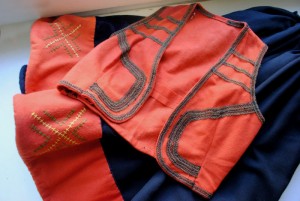Latvian refugees in a Danish palace
Compared to Germany, where there were large numbers of refugees after the Second World War, there were only about 2,000 Latvian refugees in Denmark , scattered over 40 camps. One camp was set up in a palace near Vedbaek, outside Copenhagen where Vera Puķe-Puķīte and her family were located.
This palace had at one time belonged to the Greek king. The refugees housed there initially weren’t permitted to go outside the camp. They wanted some activity and often got involved in cultural events. Vera remembers:
Vera, a pianist, was glad that there was a piano in the palaceon which she could practice. Later, she played in concerts with singer Emma Eglīte at many different functions at Latvian camps and elsewhere as well. Vera was able to continue her professional education at the Danish Royal Conservatory (1946-1947).





